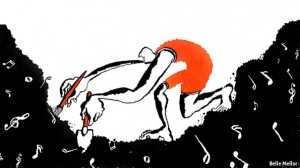Why Modern Musicians Should Care About Metadata
Hypebot.com
By Bill Wilson, VP Digital Strategy & Business Development
NARM and digitalmusic.org
April 25, 2013
Metadata. It’s a jargon-y word that probably turns a lot of artists off at the mere mention of it. It’s also one of the main things standing between them and a variety of new opportunities to make money. And those new opportunities are becoming increasingly important for cash-strapped musicians.
As time marches on, today’s artists are finding that sales of their recordings are making up less of their overall revenue picture. Of course, recordings will always be crucial to musicians for a variety of reasons, but as that slice of the revenue pie gets smaller, what are artists to do to make up the loss?
The good news is that most musicians have hosts of revenue-generating assets they don’t even know about, but they require proper metadata to thrive. For example, as we shift from a unit-based (download) music economy to an attention-based (subscription) one, artist revenue will depend more and more on long-term engagement as opposed to a one-time sale. That means photos, videos, and news items will become highly monetizable products and services.
But to take full advantage of alternative revenue streams such as these, it’s extremely important that today’s artists understand how to develop and maintain their long-term digital archive, from what information it must contain to how it should be structured. It’s one of the topics we’ll be covering at digitalmusic.org’s first Music Industry Metadata Summit on May 6-7 during Music Biz 2013. But for those eager to get started right away, here are a few pointers:
Studio Credits and Liner Notes
Who played on your recorded tracks? What was the engineer’s name? The producer? What are their email addresses? What was the name of the studio you used? Collecting this information may seem like drudgery when you’re in the middle of the creative process, but these credits are the breadcrumbs of discovery. Keep a simple Google spreadsheet of ALL of this information. You’ll regret not having it in the future.
Images and Videos
With massive amounts of posters, logos, and photos being taken of artists by both fans and professionals, it’s important that musicians maintain an archive of these images (and videos) that contains not only the photographer’s name but also the date each picture or video was taken and the usage permissions for each one. Artists should also make sure to fill out the “tags” (metadata) for image location and any other info that future fans may want to search by.
Remember, other people’s images are their property. Although they can’t sell them without the artist’s permission, artists can’t do the reverse either. Therefore, musicians must prepare themselves by downloading the highest-res versions of each image to a hard drive, knowing the photographer and their contact info, and being aware of the usage rights.
News
Artists can gain a wealth of historical information that can be collected and re-deployed (or even sold) in the future by simply subscribing to RSS feeds for their own social media accounts. It’s a huge return for practically zero investment and something every artist can do right now.
This is just a small sampling of the ways that metadata can help artists prepare for the future and increase their income. However, if they continue to tune out every time the concept comes up, they’ll be missing out on all of these new opportunities. Maintaining a proper digital archive is not difficult to do if you’re willing to make it a priority, and as we move forward, musicians will have more and more reasons to do so.
